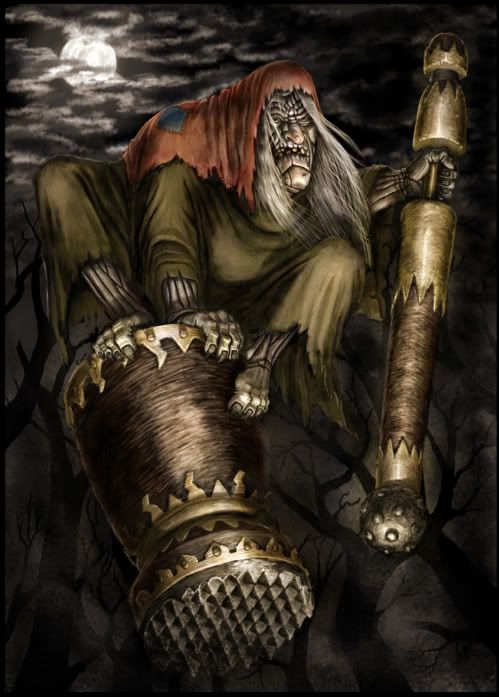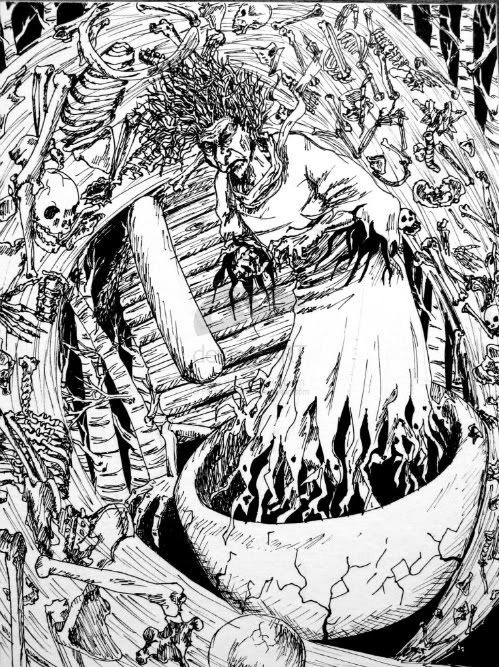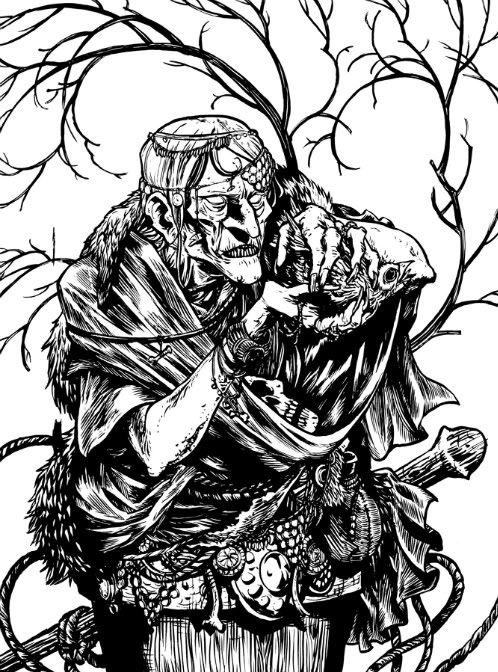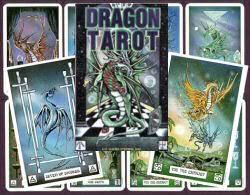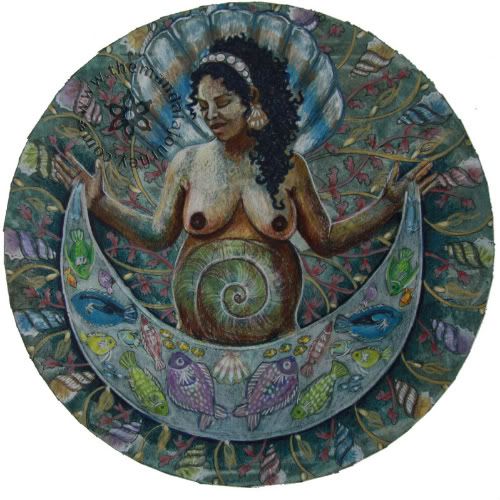
Yemaja has always been my patron goddess. From the moment I heard her name I felt an affinity for her, much the same as the affinity I felt for The Goddess Tarot. I have since begun to expand and look for other Goddesses that speak to me, but Yemaja will always be my Mama.

Yemaja is an Orisha of the Yoruba Tradition - she known as Yemoja in Africa. In Yoruba, an Orisha is an entity that possesses the capability of reflecting some of the manifestations of Olódùmarè, which is the Supreme entity, the totality of the Divine. Since Olódùmarè is all encompassing, it has no gender or face, it is all genders and all faces. Hence, Olódùmarè is commonly referred to as "it" or "they". "They" are the owner of all 'heads', for during human creation, they gave "êmí" (the breath of life) to humankind. The Orishas are the individual dieties that possess the capability of reflecting some of the manifestations of Olódùmarè. The each own a 'head', which the Olódùmarè own all of. The word "Orisha" actually means "owner of a head".
Mother Goddess of the Sea and of all women, and patron of all pregnant women and birth, Yemaja is the Mother of all saints. Her name is a contraction of Yoruba words "Yeye emo eja" that mean "Mother whose children are like fish." She is the amniotic fluid in the womb of the pregnant woman, as well as the breasts and the milk which nurture babies.
She was married to Aganju (the Volcano Orisha) and had one son, Orungan, who ravished her. As he tried a second time, Yemaja fell and burst open, and fifteen Orishas came forth from her, including Ogun, Olokun (considered the patron Orisha of the descendants of Africans that were carried away during the Transatlantic Slave Trade), Shopona and Shango, who is one of the most popular Orishas as the divinity of thunder and lightning. Other stories would say that Yemaya was always there in the beginning and all life came from her, including all of the orishas.

Yoruba was brought to the New World and of course, went through some evolution. In Haiti, the Orishas are worshiped as a part of the Voudou religion. Practiced mainly in Cuba, Venezuela, Panama, Dominican Republic and Puerto Rico, and the diaspora of these countires in the US, Santeria is a marriage of the Yoruba religion and Roman Catholic and Native Indian practices. This is where the name Yemaja comes from. In Brazilian Umbanda, Orishas are seen as saints and worshiped within a largely Roman Catholic framework. Yemaja is present in both these religions: in the former she is the patron of shipwrecked sailors and goddess of the sea, and in the latter she is called Yemanja and is the equivalent of the Catholic saint Our Lady of Regla, one of seven main Orixas. She is also seen in some rural towns as a goddess of Love and Passion, being a water goddess, she is viewed as being extremely emotional and sometimes temperamental, and she can destroy as easily and she gives and nutures Life. Other names for her include La Siren (Haitian Voudou), Iemanjá in Uruguay, and Yemana in the US.
Yemaja is often portrayed as a mermaid goddess, and loves shells, mirrors, bright shiny baubles, combs, pearls, flowers, lipsticks, and other items of vanity. She is seen as an equivalent of Brigid, and in Brazil is remembered on Feb 2nd as the patron of women, but on New Years' day she is pictured as a woman rising out of the sea and is given offering of flowers floated out to sea on little boats. In African Dahomey she is seen as the Crone Nana Buluku, goddess of swamps, earth and mud, wears black and purples and is very earthy and organic. In Cuba her colours are blue and white, and her favourite offerings are honey and molasses, whole fried fish, pork rinds and melons.

Another interesting note is that in Santeria, Orishas are seen to have many 'paths' (manifestations) called Caminos. Yemaja has seven caminos:
- Ogunte: In this path, she is a warrior, with a belt of iron weapons like Ogun. This path lives by the rocky coastlines. Her colors are crystal, dark blue and some red.
- Asesu: This path is very old. She is said to be deaf and answers her patrons slowly. She is associated with ducks and still or stagnant waters. Her colors are pale blue and coral.
- Okoto: This path is known as the underwater assassin. Her colors are indigo and blood red and her symbolism includes that of pirates.
- Majalewo: This path lives in the forest with the herbalist orisha, Osanyin. She is associated with the marketplace and her shrines are decorated with 21 plates. Her colors are teals and turquoises.
- Ibu Aro: This path is similar to Majalewo in that she is associated with markets, commerce and her shrines are decorated with plates. Her colors are darker; indigo, crystal and red coral. Her crown (and husband) is the orisha Oshumare, the rainbow.
- Ashaba: This path is said to be so beautiful that no human can look at her directly.
I think what I love about her is that she encompasses so many religions, she is ever present and beautiful. She is Maiden, Mother and Crone, goddess of love and emotion, and she is a dark goddess as well. there are so many facets of her that she is almost always relevant for my prayers. I have always loved mermaids and ethereal water spirits like Sprites, and so she appeals to me aesthetically as well.

I envision her as a voluptuous velvety-dark-skinned woman wearing silvery white sea foam or water, pearls and shells at her wrists and ankles, necklaces of pearls between her breasts and flowers in her long, thick flowing hair. I imagine that she loves the night time and the moon, since the moon draws the tides. I imagine her face to be beautiful but unable to truly be held in memory. Sometimes I envision her as a mermaid, swimming through the tides, or I see her as dancing upon the surf among the waves in the moonlight. She is mysterious and powerful, benevolent and harsh, nurturing and dark.

She is my Mama Yemaja.

